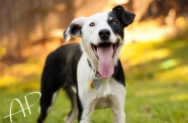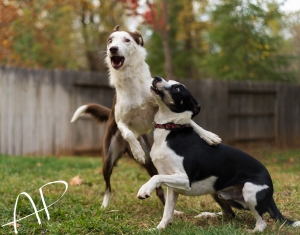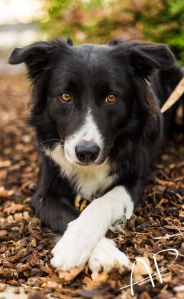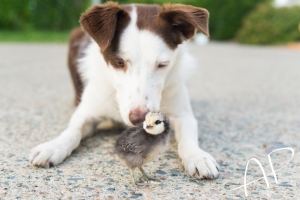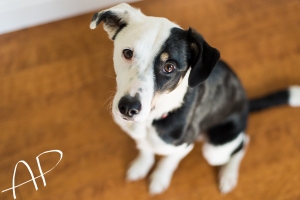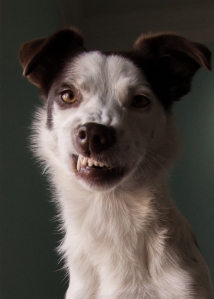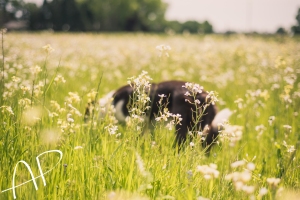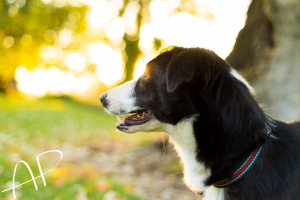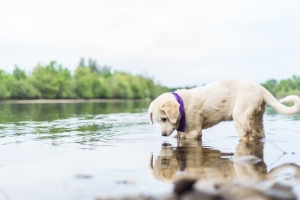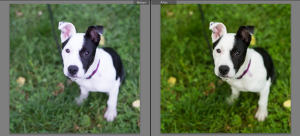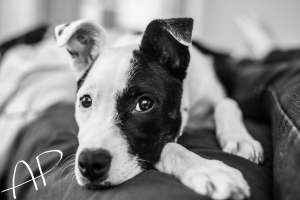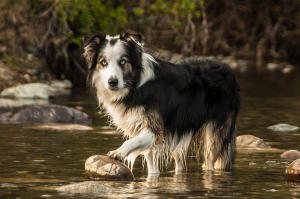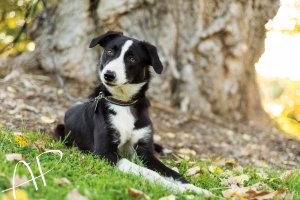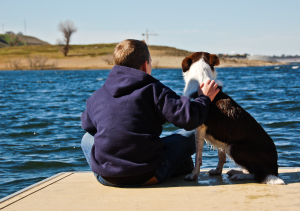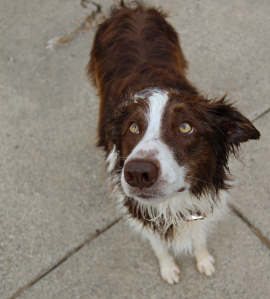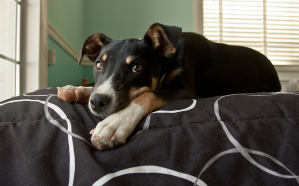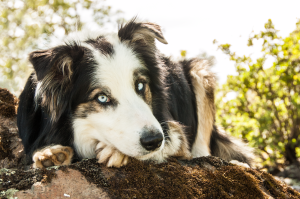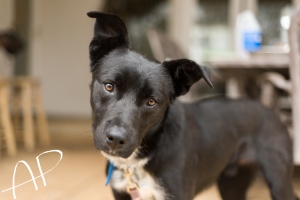I just thought I’d share some of my favorite pictures.
How I Integrate New Foster Dogs
You would think it would be difficult, bringing in dog after dog to a household with existing pets. I now live on my own, in my parents guest house. I have dogs, cats, and chickens. So, how do I do it?
It’s easier than you might think. The cat part is the easiest – they don’t live in my house! They live in my parents house. One is “my” cat, the other is my mothers. As much as I love my cat, it’s nice having a cat-free home when it comes to fostering dogs. I don’t have to worry about dogs being good with cats, or bringing home a dog that wants to kill my cat. It was manageable, fostering dogs and having cats, but it’s much easier having them live in my parents house. I still get to see them every day without having to worry about them being injured by a dog. I cat-test new dogs by bringing them to my parents house and letting them see a cat while on leash. If they do well, they’re allowed to get closer to the cat. If they show that they want to chase or injure the cat, they leave and are not allowed to go to a home that has cats.
Introducing new foster dogs to my dogs is harder. Since it’s summer and I am fostering two dogs at a time, there are 2 dogs that my new foster dogs need to meet – my personal dog Nelly, and whatever other foster dog I have at the time. Usually, my foster dogs are pretty good with other dogs so that is not a problem. Nelly, however, is a brat. People don’t believe me when I say it because she looks so sweet and innocent, but don’t let that cute face fool you. She is a possessive jerk. She guards doorways, gates, chickens, cats, food, toys, you name it. However, I can’t complain, because when I got her she wanted to rip the throat out of every single dog she saw. Using positive reinforcement training, I taught her that other dogs are not something to fear(aggression is rooted in fear) and now we are at the point where she can usually meet another dog with just raised hackles, sometimes a little bit of growling is involved but lately there hasn’t been any. I’m very proud of the progress she’s made so I have to say that I’m happy with raised hackles and growling. I continue to work on teaching her that she doesn’t need to be scared of other dogs. It is a never-ending process.
When I introduce new dogs, it always through a crate for everyone’s safety. Usually what happens is this: I bring the new dog home – they ride in a crate in the back of my car. I let Nelly out and she right away jumps into the car and sniffs the new dog through the bars of the crate. She feels safe this way and usually there is no growling or hackles raised. This is the safest way to introduce new dogs, as I don’t always know if the new dog will be good with other dogs or not. If they do try to attack, they won’t be able to hurt my dogs as they’ll be separated by the wire bars of the crate. So far, I’ve never had a dog try to hurt another when introducing this way. This is not how I would recommend someone adopting a new pet introduce them to their existing dog, though. I do it just because it’s easy and safe, but it’s not the best way to go. If you have any concerns about your new family member getting along with the existing one, make sure they meet on neutral territory, then walk them home together.
The chickens can be a bit difficult to do introductions with, as they are scared of new dogs(which is pretty smart of them!). They will all start clucking and run away. What’s really nice is that my chickens now have their own yard, separate from the dog yard. It is separated by 6ft chain link fence, so a dog would have to try VERY hard to get to them. If a dog obsesses over chickens at the fence, they are not allowed to be outside alone as I don’t trust them to not hop the fence to get to them.
When I introduce a dog to my hens, I leash the dog and bring them into the chicken yard. If they try to chase, it’s over and they’re not allowed to be around the hens. It seems there’s two types of dogs: the ones that pretty much ignore the chickens, and the ones that want to tackle and hurt them. In my experience, most dogs want to chase the hens, but I still do get dogs that are okay with chickens.
When I first started fostering dogs, they would be out in the house with me almost all the time. I quickly learned that this was a fast way to cause separation anxiety in a new dog. They go from a scary environment(a shelter) to a new environment(my house), so naturally they are feeling pretty scared. This causes them to cling to their person, and consequently they start to freak out when that person leaves their sight or the house. Now, my dogs do not get much freedom when they first come to me. In the morning when I wake up, they go outside and that is where they stay until it gets hot out. Then, they come inside and go to their crate. They usually get no time out in the house with me on their first day. Their second or third day, they get about an hour, and we work up from there. Since I have started doing this my instances of separation anxiety have dropped tremendously. Separation anxiety is a problem that greatly increases the difficulty of getting that dog adopted. I will soon write up an article on separation anxiety – how to prevent it, and what to do if your dog already has it.
Littermates
People often think it is a good idea to get two puppies at the same time, usually littermates. The following is usually people’s reasoning for getting two pups at the same time:
-They’ll keep each other company
-Both my kids want their own dog
-Two puppies is double the fun!
They’ll keep each other company
While this may be true some of the time, it is not always the case. An important question to ask yourself is, why do they need to keep each other company? Is it because you’re too busy to pay attention to them during the day? If so, maybe you should consider waiting to get a dog or dogs, until your life has calmed down a bit. Dogs require a lot of time and attention, especially when you first get them.
Both my kids want their own dog
It seems like a truly great idea, doesn’t it? Both your kids walking their dogs down the street, everyone the best of friends. But be honest with yourself – do you really think it will turn out that way? Often times, the kids will get bored with the dogs after a period of time and then the responsibility falls on the parents to take care of both animals. However, will your children be the ones housetraining two puppies, feeding them, bathing them, and most importantly, training them? Unless they’re very responsible teenagers, the answer is most likely “no”. That will be the responsibility of the parents.
Two puppies is double the fun!
That depends on your definition of fun. Cleaning up pee and poop from puppies that are still being housetrained, trying to watch both at the same time so they don’t soil in the house, eat your couch, and cause who knows what other trouble, is not really my definition of “fun”. In fact, to be honest, I don’t usually foster puppies because they are so much work. They stress me out which causes my health problems to get worse. Out of all the dogs I’ve fostered(29 as of 6/18/14) only 5 have been puppies, and every time I foster a puppy it reaffirms what I already know: puppies are a LOT of work. They chew, they gnaw on hands and arms, they pee and poop in the house, and they have an insane amount of energy. Sure, playtime with two puppies can be great, but do you really expect to spend all of your time playing with them? What will you do when you want to have some calm time but your puppies want to chew up the sofa?
The real problems with littermates
The real problems with littermates. It’s not the extra work involved, or the extra cost, it’s the fighting. “The fighting?” you ask? Yes. It is a very common problem in littermates. Two dogs that were best friends in puppyhood often grow up and start to hate each other with a burning passion. It can happen any time after maturity. My parents had two sibling Dachshunds, and they didn’t start fighting until they were 7 years old. It began with just a little scuffle here and there, nothing serious and only when they were inside. For several months this continued, and it seemed to have plateaued. They would fight on occasion, but it was never serious and they always stopped. Then, they started fighting outside. It happened once, then again a couple months later. Then again a month later. Then a few weeks later…until eventually, they were fighting on a weekly basis. It was eventually decided that the best thing to do for these dogs, who spent all their time either outside or crated, and were never paid attention to, was to rehome them.
What would have happened if Oliver and Murphy were not rehomed? Their fighting would have continued to progress to the point where they would eventually try to kill each other every time they were together. This happens so often, and it’s devastating for the families who love their dogs. They’re then faced with a very difficult decision…rehoming one of the dogs, or attempting to keep them separate 24/7 so they do not have access to each other.
But I have littermates and they don’t fight, they love each other!
That’s great! Let’s hope it stays that way! Unfortunately, there’s a good chance it won’t. Fighting can start any time after maturity. Be prepared in case they do start to fight.
Help! I took in littermates not know the potential issues!
If this is the case, you need to immediately take action to give yourself the best possible chance at them getting along for the rest of their lives. One of the most important things to do is keep them separate. Not all the time, but a portion of it. Play with them separately, train them separately, walk them separately, and if you crate train, put their individual crates in separate parts of the house. Do not crate them together.
To learn more about the problems and solutions to raising littermates, check out this link. There are three pages, be sure to read them all.
In summary – while it might sound like a good idea to get two puppies at the same time, the potential for problems is overwhelming. If you are set on getting a puppy, it is best to wait at least a few months in between adopting them.
Also, Oliver found a fantastic home & Murphy is in a great foster home that may end up keeping him. Both are now indoor dogs and part of loving families. They’re very happy, that is what is important.
Photographing Dogs – extra!
Extra! Breaking the rules.
I figured I’d add one last post to this short “Photographing Dogs” series. Today what I want to talk about, is breaking the rules! Breaking the rules in photography is fun, and there is definitely a time and a place for it. For example, what’s the fun in always taking pictures at the dog’s level? It gets boring after a while. Sometimes it’s fun to shake it up!
One of my favorite ways to break the rules is to take pictures from above the dog. This can be a bit difficult as dogs don’t seem to like looking up, unless you’re holding a treat. I always forget to bring treats to my photoshoots(forgetful me!) so I have to improvise. I usually just make funny sounds to get their attention, and snap a picture as soon as they look up at me. It usually takes a few tries to get it right, but once I do I love the results. Now, if you’re like me and you always forget to bring treats to your photoshoots, you may have a hard time doing this, especially with untrained dogs! But if you can remember to bring treats, well it should be a fairly easy picture to take.
Another fun way to break the rules is to put your white balance(the overall color of the picture) off a bit. If the picture was taken in a scene where there’s snow on the ground, the picture might actually look better with a very slight blue tint to it, as it gives it a cool feel. If the picture was taken with an orange sunset in the background, try adding a bit of a red tint to the picture and see how it looks. You’d be surprised what a little extra color can do for a picture! It can also be fun to use some filters or presets on your pictures. I have enjoyed many of the free presets that I have found at PresetPond.
Have fun, break the rules. Be a rebel!
Photographing Dogs – pt. 2
If you missed “Part 1”, you can see it HERE.
Part 2 – lighting, background, editing
Maybe just as important as your subject, is your background and lighting. Who wants to see a picture taken in harsh sunlight with trash littered all over the place?
The picture’s lighting is very important. Try to avoid taking pictures in direct sunlight, as this creates harsh shadows, causes the subject to squint, etc. Taking pictures in shade can work, but often your background will be overexposed. If you do take pictures in the shade, make sure it is solid shade and does not have little spots of light shining through. The absolute best times to take pictures are at sunset, and when it is overcast outside. In both of these scenarios, it is plenty light out so your pictures will be well lit, but there are no harsh shadows. The light is usually very soft and even, which makes for great pictures.
Your pictures background is just as important as the lighting. I try to choose a photoshoot area that has a very natural feel to it. The river park by my house is great as there’s a lot of trees, and some dogs like to wade in the river, which makes for adorable pictures! If there is any trash left by other people, I clean it up. It’s not good for the environment and it certainly isn’t going to look good in my pictures! I do sometimes enjoy taking pictures in a city setting, however I don’t get to do this often as I live out in the country. Aim for a background that you find beautiful, and chances are the pictures will have a nice feel to them! Avoid having light poles, cars, etc. in the background of your pictures.
What you do with your pictures after you take them is crucial. In my experience, pictures straight out of the camera often have a blue tint to them, sometimes it’s severe and sometimes it’s just mild. On the left you’ll see a before & after of a picture of Stella. The color of the picture was off, so I corrected it in Lightroom. It only takes a minute or two to get the correct color balanace. I also upped the contrast, vibrance, and clarity. I took down the highlights, and the exposure by 0.5 points.
Photographing Dogs
People often ask me for tips for photographing their dogs and foster dogs, so I thought I would share what I do to get the pictures that I do. This will be a 2-part post. Part two is coming on Sunday!
Part 1 – the dog.
This is, of course, the most important part of your picture. Your subject, the dog.
When I’m taking pictures of foster dogs, my goal is to take pictures that people connect with. I want them to feel drawn towards the dog, I want them to see my pictures and think, “I want this dog.” One of the best ways to do this is to implement a little psychology into the pictures. Studies show that the first thing a person looks at in a picture is the subjects eye. When they see a picture, their brain automatically starts searching for what should be the focal point – the eyes. Because of this, the focal point of my pictures is almost always the eyes.
It’s also important to take the rest of the dog’s body into account. You don’t want a picture where they are standing awkwardly, right? I often have to lure foster dogs into the position I want, then slowly back away and hope they stay in that position. Or, I wait for them to move and hope they move into a good position. A lot of it can be just waiting for the dog to strike a cute pose. In the picture above, I had Riley leashed to a tree on the river bank. He wanted to follow me into the river but hit the end of his leash, so he simply stood there watching me. He put his paw up on the rock which was the perfect touch to this picture.
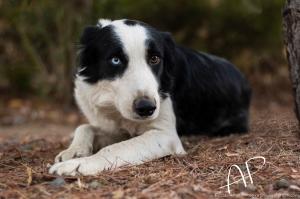
Clint, a very terrified dog, was leashed to the tree in this picture. He was later adopted by one of my Instagram followers.
Leashing your dog can be a good way to get them to stay in the area that you want. You can either take pictures so that the leash isn’t visible, or edit the leash out in Photoshop. I am a big fan of Photoshop Lightroom 5, I use it for editing every picture. You can take leashes out with the “clone” and “heal” tools. It takes a bit of practice but once you’ve got it down, it’s easy and nobody can tell that your dog was leashed.
And, last but not least, is you. How and where you stand&act is going to affect what the dog looks like in the pictures. I almost always try to take pictures from the dogs eye level. Not above, not slightly above, not below, not slightly below, but at their level. It’s also important to get their ears perked forward! I usually do this by embarrassing myself – making funny noises that the dog is interested in. I have found that meowing and whining are what dogs are usually most curious about, and if I’m lucky they’ll do more than just put their ears forward, they’ll tilt their head!
It takes a lot of practice to be able to capture all of this in one picture, but once you’ve got it down it comes naturally.
Dominance! FAQ.
What is dominance?
Dominance in dogs is the idea that your dog is, yes, trying to dominate you. He’s trying to be in control. He wants to have control over the food, the water, the toys, and the couch. He wants to be “alpha dog”.
Are dogs dominant?
The short answer to this is a big, fat, no! The idea of dominance as the cause of behavior problems in dogs is an idea that has long been debunked. It is now nothing more than a myth.
Then why do so many trainers say dogs are dominant?
Chances are, you’ve heard of Cesar Millan, AKA “The Dog Whisperer”. His training techniques are based on the idea that dogs that are misbehaving are trying to dominate their owners. They’re pulling on the leash? They’re trying to dominate you. They’re coming up on the couch uninvited? They’re trying to dominate you. Aggression? Dominance, they say. Watch out, your dog wants to be in control!
The idea that dogs are dominant creatures comes from a study done on wolves. Yes, wolves. In the 1940’s a study was done on a family of captive wolves of mixed families. You can see how this study was flawed from the foundation, right? Well, this study focused mainly on the hunting behavior of the wolves. What does this have to do with dominance in dogs, you ask? Well, this is where the idea that dogs are dominant creatures comes from…an extremely flawed wolf study. As my trainer says, “Dogs are not tame wolves”. We should not be learning about dog behavior from studying wolves, we should be learning about dog behavior from studying dogs! Studies done on dogs show that dominance is not, in fact, the cause of behavior problems in dogs.
If it’s not dominance, then what causes these behaviors?
Behaviors that were long though of as “dominant” behaviors have much simpler explanations.
Leash pulling – the dog is simply excited! You’re going somewhere new, of course he wants to pull on the leash. He wants to get there faster!
Jumping up on furniture – if you were a dog, where would you rather take a nap? The comfy, squishy couch/bed, or the dog bed on the floor? Often times dogs will jump up on furniture simply because that’s where his people are, and he wants to be close to them.
Aggression – this one is important. People always argue that “red zone” dogs are dominant, and that positive reinforcement training CAN NOT work for these dogs. Please check out this video of a food-aggressive dog being trained using nothing but reinforcement. Was the dog what some people would consider “red zone”? No. There was no biting, no lunging, no growling. However, a behavior can be trained the same way no matter if it’s minimal or extremely severe. I trained a “red zone” dog to stop wanting to kill other dogs using nothing but positive reinforcement.
Is there such thing as a dominant dog?
I had a discussion with my trainer about this, and she made a good point – a truly dominant dog would not be aggressive or possessive. It would be confident that it has control over the resources, and therefore would be willing to give them up. However, the short answer is “no”, dominance is not the reason your dog is misbehaving. This article is HIGHLY recommended reading.
What’s wrong with dominance training?
The main problem with dominance-based training is the fact that it is flawed from the ground up. Dominance as the cause of behavior problems in dogs is a myth that has been scientifically debunked over and over. Trainers who use dominance-based methods most often use techniques and tools that are not only outdated, but cruel. Hanging dogs by choke collars, squirting with a squirt bottle, yanking on a prong collar, alpha rolling, and scruff shakes – just to name a few – are dominance-based training techniques. The most important thing to know about aggression in dogs, which is usually what is being trained by these trainers, is that all aggression is rooted in fear. Dog-dog aggression, dog-human aggression, it is all rooted in fear. The dog is trying to attack you when you take away his food? He is scared that you’ll take away his food! You know that he’s not going to starve, but he doesn’t. You know that there’s more where that came from, but he doesn’t. Instead of using the techniques above, which only instill MORE fear in the dog(and consequently often only mask the problem or even make it worse), you can use positive reinforcement techniques which will instead teach the dog that he doesn’t need to be afraid of having his food taken away, because he will always get something in return. Instead of masking the problem by making the dog too scared to defend himself, you teach him that he does not need to defend himself. You teach him that he is safe, and loved, and that training sessions are fun because you mutually trust each other. He trusts that you will not hurt or scare him. Don’t betray that trust.
People? What are those?
I was recently diagnosed with IBS, after having struggled with it for over a year. Unfortunately, there is no cure or approved treatment for IBS. There are things you can do that are supposed to help, but so far, nothing has helped me. I’ve taken supplements, fiber, probiotics, vitamins, etc. I am already on a vegan diet due to other health issues(and to save the animals!) so we know it’s not a dairy allergy. The next step is to try different types of diets – FODMAP, gluten-free, you name it I’m going to try it. Depending on the severity, IBS can make your life a living hell. I know it has for me – I had to leave school and do independent study, I can’t leave the house without first taking medication, and I now have anxiety related to leaving the house. But, I persevere. I don’t get to go out that often, most of my days are spent cooped up in my little house, meaning I don’t get to see people or friends very much.
But when I do, my camera is glued to my face. I LOVE to photograph people when I get the chance, though often my Nelly girl manages to sneak into the pictures. Okay, more than “often”. She ends up in several pictures in every photoshoot. I love taking pictures of her and she loves being in front of the camera, and people usually enjoy having their picture taken with the pretty dog! This, of course, only goes for the close friends and family that are allowed around her. (See the post “A Difficult Decision”) She and my brother both have beautiful eyes, so it’s fun to get the two of them in a picture together. And the way they interact is so sweet – she absolutely adores him and he adores her, too.
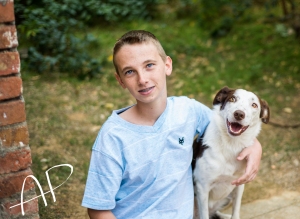 One of my favorite things about photographing people is that, unlike dogs, when you tell them to sit still they’re usually going to listen! Photographing dogs can be frustrating at times when you’re working with untrained, hyper ones. People are generally more willing to take instruction…without needing food motivation! Don’t get me wrong, I do love photographing dogs. I love photographing dogs even more than I love photographing people. But sometimes it’s nice to have a change from what I normally do. I don’t photograph people very often, but when I do I’m always really excited to get home and edit the pictures.
One of my favorite things about photographing people is that, unlike dogs, when you tell them to sit still they’re usually going to listen! Photographing dogs can be frustrating at times when you’re working with untrained, hyper ones. People are generally more willing to take instruction…without needing food motivation! Don’t get me wrong, I do love photographing dogs. I love photographing dogs even more than I love photographing people. But sometimes it’s nice to have a change from what I normally do. I don’t photograph people very often, but when I do I’m always really excited to get home and edit the pictures.
What do you want to see?
I’d like to know what you guys, my wonderful followers and subscribers, would like to see me write about!
Can I Foster & be a Student?
I started having health problems in the 8th grade. First, it started with a bad back. Then, the chronic nausea hit. Then, I was diagnosed with IBS-D. To put it frankly, my life has been a living hell, especially since I started having problems with IBS. But I carry on.
In my junior year of high school, I was failing everything. Straight D’s and F’s. It’s not because I wasn’t smart, and it’s not because I didn’t care about my grades, and it’s not because my parents didn’t try to get me to get good grades. It’s because I was depressed. I was depressed because I was dealing with health problems that made my life horrible. I would go to school, get home and then sleep all day. I’d wake up for dinner, then go to bed for the night. I almost never did homework because I was just too mentally and physically exhausted. I finally convinced my parents to let me leave regular high school and go to an alternative high school. It was 4 hours a day, all on a computer in a classroom, with no homework. I was finally getting good grades for the first time in years.
After we moved from Sacramento, CA to Redding, CA we decided to enroll me in independent study high school. I would meet with a teacher once a month and he would give me homework to do, and it would be due at the next meeting. This was the best type of schooling for me, as I could work on my own schedule. If I didn’t feel well, I didn’t have to do work right then. I could do it later when I felt better. I wasn’t pressured to do a load of homework every single night. I worked at my own pace. As long as everything got done on time, there was no issue. With independent study, I did my work, I got it all turned in on time, and I got straight A’s for the entire year I was in independent study. (note: parents, let this be a lesson to you. Don’t be afraid to try a new type of schooling if your child isn’t doing well in traditional school! It just might turn things around for them!)
Now, I’ve graduated high school. My transcripts don’t look great because of the first 2.5 years where I failed everything, but the last 1.5 years look darn near perfect. I just went to my new student orientation on Friday at the local community college, and will be setting up an appointment soon to meet with a councilor to create a preliminary education plan. I already know what I want to do after school – I want to run my own business. I think it’s something I would really enjoy doing. I could run a pet supply store and bring my dog, who is my unofficial service dog, with me to work every day. Life would be good.
My concern now, is actually going to college. I’m going back to a type of schooling that was very hard for me, and this time there will be even more work. I no longer have chronic nausea, that went away after I went vegan, however I still suffer from back pain and pretty severe IBS. I worry that I will fail classes again. I also worry that I won’t be able to continue fostering dogs because I’ll not be able to spend enough time taking care of them. On one hand, foster dogs need more time and attention than my Nelly does. They need training. They need to be taught how to be good family members. Will I still be able to do this while I’m in college? On the other hand…even if I can’t work with them very much, should I still foster? It’s still saving lives, even if they do end up having to go to their new homes without much training. I’m hoping that I’ll be able to continue fostering dogs throughout college, because fostering is something I really enjoy doing. I’ve been doing it since I was 15, and I don’t plan on stopping unless I really have to.
I love fostering dogs.









